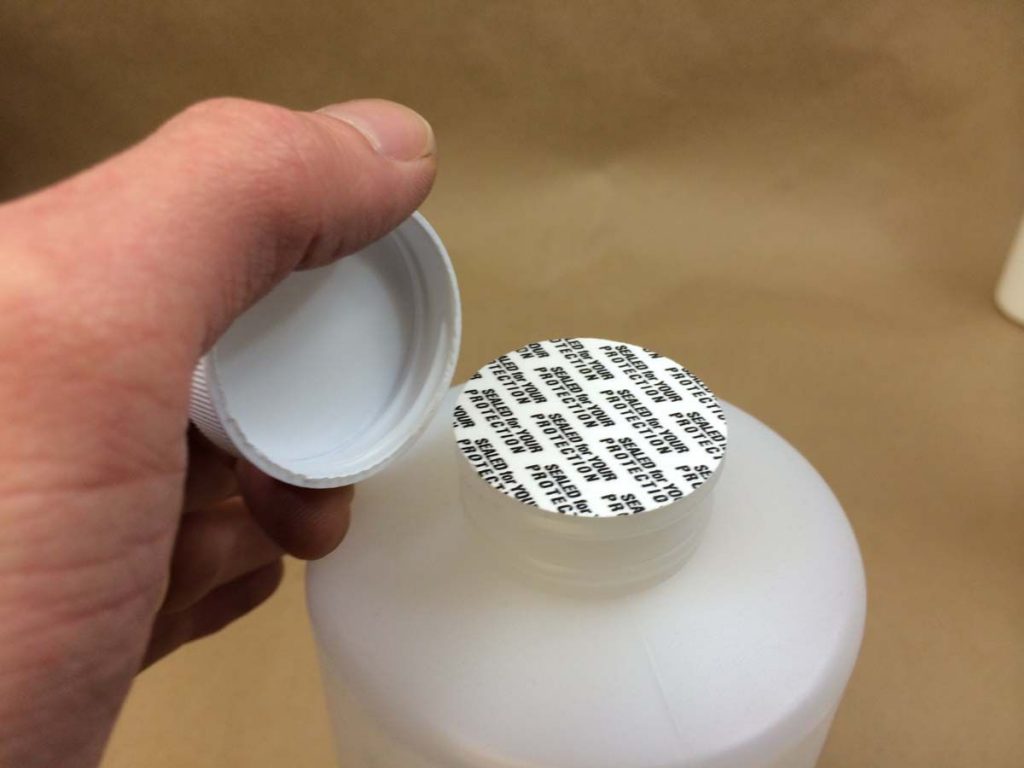
The packaging should not only attract the purchase of the product, but also present a user experience that the consumer wants to repeat frequently, that is why there are great developments in relation to this concept in the design of caps and seals for bottles (liners or fittings).
By combining different types of closures with the appropriate seal, the objectives set by the brand designer can be achieved.
Diversity of caps and seals
- Foamed seals or liners
These seals have the special characteristic that, being made of foamed plastics, they allow the container to be airtight, adjusting the cap to the deformations found in the bottle necks.
They are commonly made of foamed polyethylene, due to their low cost and compatibility with the products to be packed. Their most common thickness is one millimeter, although we see applications with higher or lower values.
This type of seal is commonly used with plastic screw caps (from 13 to 120 millimeters), either with or without security ring. If a tamper-evident or tamper-evident seal is required, we must rely on elements such as tamper-evident rings on the caps, heat shrink bands or a combination of both.
An example of improved tightness is seen in the wine and spirits industry, where traditionally cardboard was used for these closures.
The industry has been converting to foamed seals for their re-sealability, conformability and hygiene (they do not produce the fungus that wet paper can produce).
There are variations of these seals for bottles that are complemented with high barrier laminations (preservation of wines or products that require high oxygen barrier or MVTR).
- Induction seals
They are appropriate to fulfill the objective of security seals and at the same time hermeticity. These seals are activated by an ultra-frequency that heats an aluminum foil and in turn a polymer that seals in front of the container. The cost of introducing this technology has been reduced considerably over the last 10 years, making it more feasible to consider.
One of the main advantages is that the packaged product is not heated and the seal achieved is very clean and efficient in production. There are one-piece induction seals, which are typically used with dispensing caps or products that once opened will be consumed in their entirety.
These seals are designed to be removable so that the consumer can easily remove them, without affecting the hermetic seal guarantee. To make them more versatile, tabs are designed to allow the user to remove them.
The combination of a dispensing cap with an induction seal is often necessary to allow a barrier to exist as it alone does not protect the product as a whole.
Two-piece induction seals allow the versatility of a primary warranty seal (on the container), with secondary bottle seals for product maintenance (remaining in the cap).
In this area there are novel developments in line with these combinations. The traditional carton-backed seal has been seen to be very versatile in cost and sufficient for many products (e.g. soluble coffee).
The total cycle
Considering the total use cycle of the product is important for effective packaging design: Will it be in a hot place (e.g. the beach)? Will it travel on a plane or ship with the user? Does it require refrigeration or reheating? Does it need to be opened with one hand? Do we provide the user with a way to dose or dispense the product?
A combination of the right cap for the application and a seal that complements it in its total cycle of use should be sought.
There are products that by their nature require gassing or collapse the containers and this can be a big problem to use them. That is why there is a whole range of closures, attachments and seals for bottles that allow to equalize the pressure of the packaging with the atmosphere.
Today we see caps and containers with extremely large diameters, which obey the consumer’s needs in terms of how they are going to use the product, mix it, dose it, etcetera.
The effort of designers to innovate lids so that they are attractive, functional and obviously safe is a reality. The perfect balance is achieved when the closure meets these objectives without making it difficult to use. That is why all the design possibilities must be analyzed, without leaving aside the main objective: that our customer repeats his purchase.